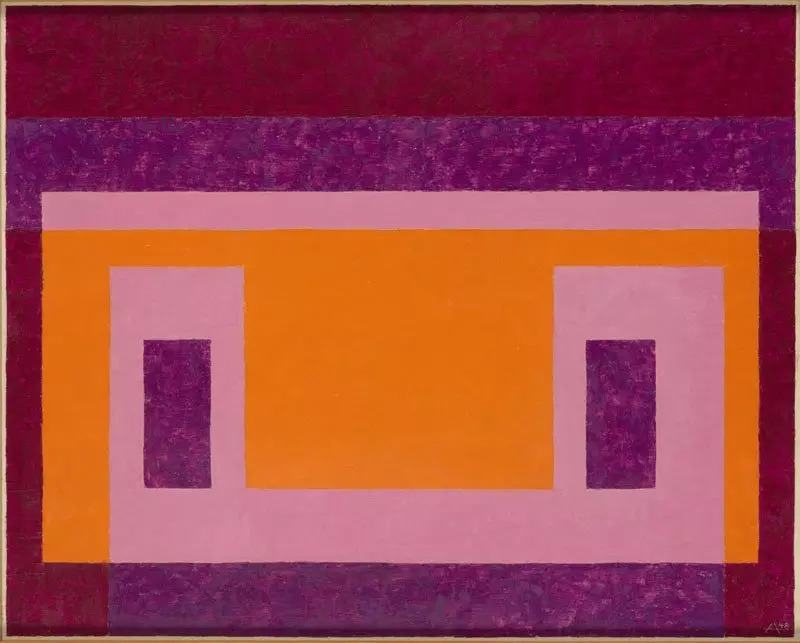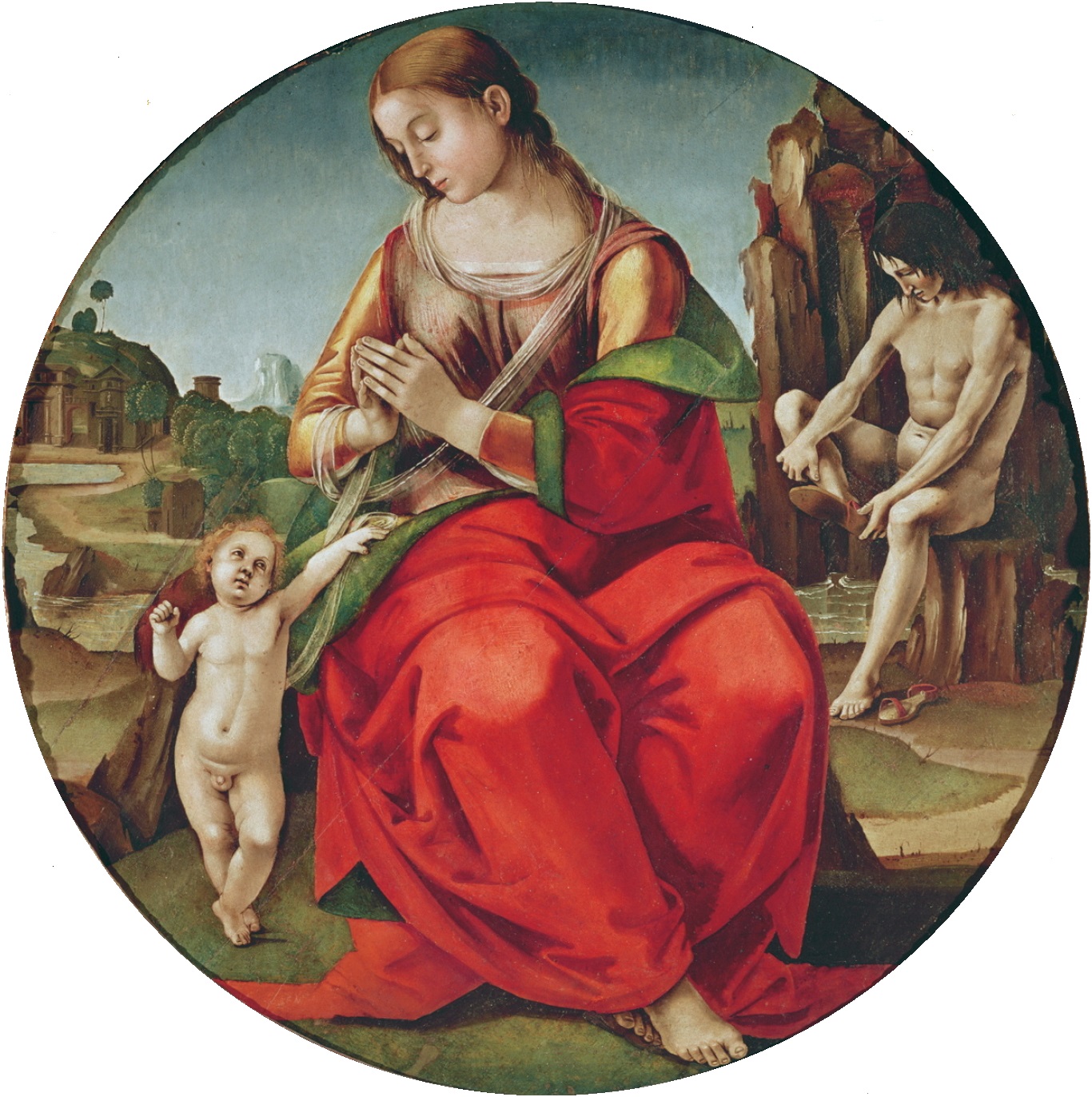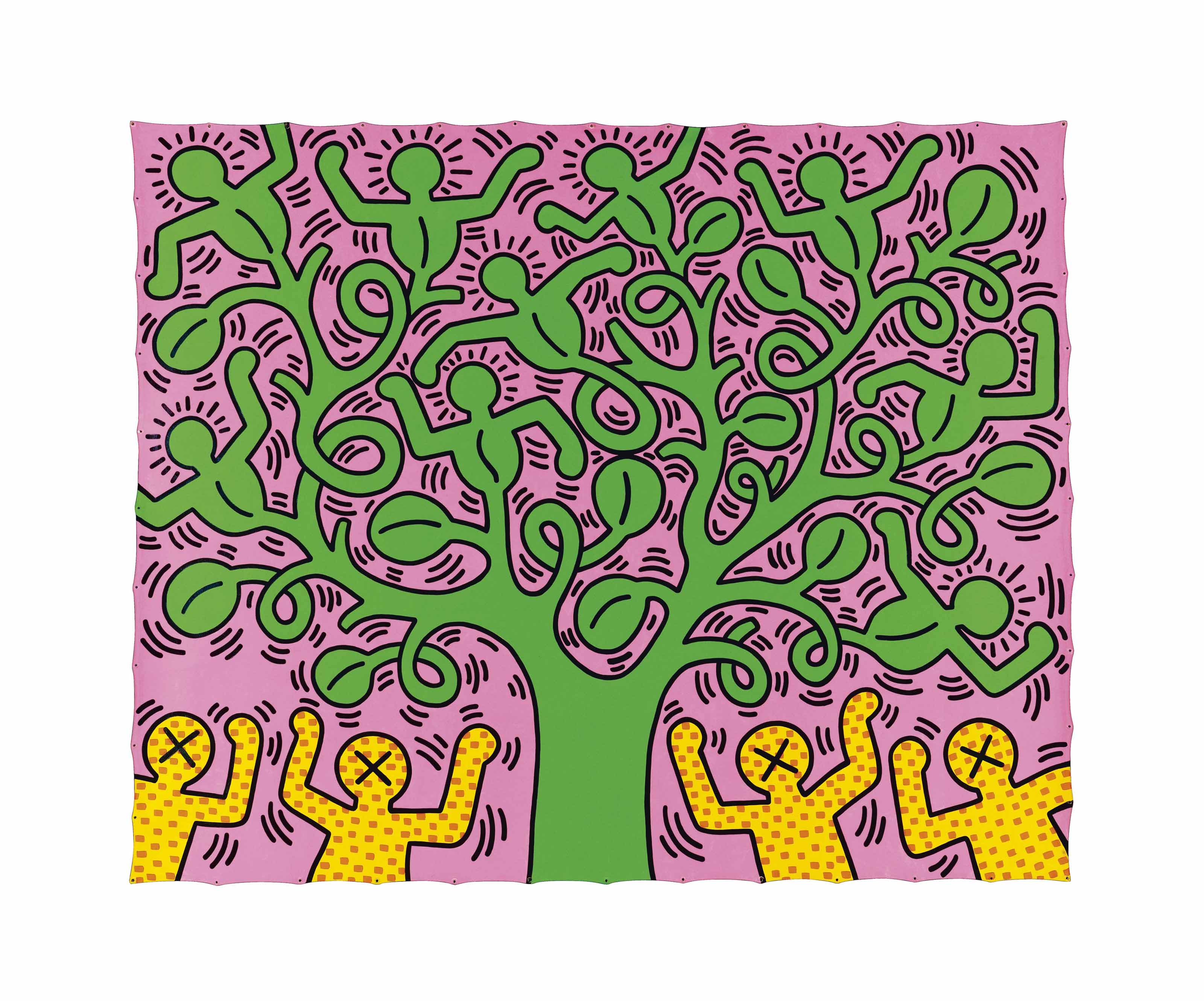





19
KAWS
UNTITLED
Full-Cataloguing

Josef Albers
Variant / Adobe: ''Red, Violet around Orange, Pink'', 1948

Raphael
The Alba Madonna, c. 1510
Collection of Andrew W. Mellon, National Gallery of Art, WashingtonAmerican visual artist and international cultural phenomenon KAWS has experienced a meteoric ascent to global acclaim for his playful and intriguing compositions, firmly establishing his position in the lexicon of contemporary art. Fresh to the market and showcasing his instantly identifiable aesthetic that straddles both traditional illustration and expressive abstraction, the present work is a compelling example from the artist’s celebrated tondo series. Deriving from the Italian rotondo, or ‘round’, the Renaissance term ‘tondo’ refers to a circular work of art that historically allowed painters to emphasise the centre of an image by containing a scene within a frame, thereby separating it from its environment. KAWS subverts the traditional characteristic of tondo compositions in the present work, as his spherical canvas seemingly offers a closely cropped focal lense into what appears to be a much larger cartoonish subject. As bulging eyes and colourful teeth fill the frame, the viewer is left to imagine for themselves how the monumental creature’s form would extend beyond the constraints of the canvas and into the room.
Within the circular canvas’ diameter, however, is a graphically striking composition rendered in brilliant chromatic hues that interact with one another in a style that resonates with Josef Albers’ influential practice. Executed in boldly defined forms, KAWS’s proficiency as a colourist is clearly evident alongside his now matured approach which has been tightened and honed over many years. The painting’s smooth surface reveals no trace of KAWS’s freehanded brushwork, presenting a mastery of the medium that stems from his early success on the streets of New Jersey in the 1990s. In revamping billboard and bus shelter advertisements, KAWS would leave his illustrative marks with such meticulous attention to detail that his modifications could easily have been mistaken for the originally intended display. Furthermore, KAWS’s career-long investigations into the legacy of pop culture and our image-saturated and consumer-driven world come to the fore of the present work, as whilst the artist evokes the sensibilities of his Pop predecessors including Andy Warhol, Keith Haring and Claes Oldenburg, the content of KAWS’s ingenious compositions succeed in revising the movement in light of contemporary shifts in society.

Luca Signorelli
Madonna and Child, c. 1492-1493
Collection of Alte Pinakothek, Munich

Keith Haring
Tree of Life, 1985Drawing from the nostalgic potency of cherished cartoon heroes who have significant universal cultural value, KAWS reinvents them with an abstracted twist. In magnifying and distorting their animated portraits, KAWS strips them of any comforting familiarity, transforming them into entirely new entities that are infused with witty critical discourse. As evident in the present work, KAWS’s uncanny cartoon creation is marked by his characteristic ‘X’ eyes - a somewhat sinister hallmark of his practice that alludes to the imagery from cartoons after a character has drunk from a vial of poison. As KAWS explains, ‘even though I use a comic language, my figures are not always reflecting the idealistic cartoon view that I grew up on, where everything has a happy ending...I want to understand the world I’m in and, for me, making and seeing art is a way to do that.’ (KAWS, quoted in KAWS. WHERE THE END STARTS, exh. cat., Modern Art Museum of Fort Worth, Fort Worth, 2016, p.5). With his appropriations of beloved characters, the artist’s intelligent compositions have opened the realm of his art to both art world giants and a global audience including more than 2.7 million Instagram followers - helping KAWS to become a household name.
In KAWS’s multidisciplinary practice that incorporates painting, sculpture, and print-making, the artist’s multifaceted identity has caught the attention of collectors worldwide, as well as industry giants including Dior, Nike and Uniqlo, with whom the artist has popularly collaborated. His practice has been honoured with numerous solo shows around the globe, including a retrospective at the National Gallery of Victoria, Australia (2019-2020) as well as an upcoming major survey at the Brooklyn Museum scheduled for 2021. Furthermore, works by KAWS have found their place within the permanent collections of international institutions, including the Brooklyn Museum in New York, the Modern Art Museum of Fort Worth in Texas, the CAC Malaga in Spain, and the Rosenblum Collection in Paris. KAWS is, without a doubt, one of the most prolific and forward-looking artists of our generation.
KAWS
American | 1974To understand the work of KAWS is to understand his roots in the skateboard and graffiti crews of New York City. Brian Donnelly chose KAWS as his moniker to tag city streets beginning in the 1990s, and quickly became a celebrated standout in the scene. Having swapped spray paint for explorations in fine art spanning sculpture, painting and collage, KAWS has maintained a fascination with classic cartoons, including Garfield, SpongeBob SquarePants and The Simpsons, and reconfigured familiar subjects into a world of fantasy.
Perhaps he is most known for his larger-than-life fiberglass sculptures that supplant the body of Mickey Mouse onto KAWS' own imagined creatures, often with 'x'-ed out eyes or ultra-animated features. However, KAWS also works frequently in neon and vivid paint, adding animation and depth to contemporary paintings filled with approachable imagination. There is mass appeal to KAWS, who exhibits globally and most frequently in Asia, Europe and the United States.